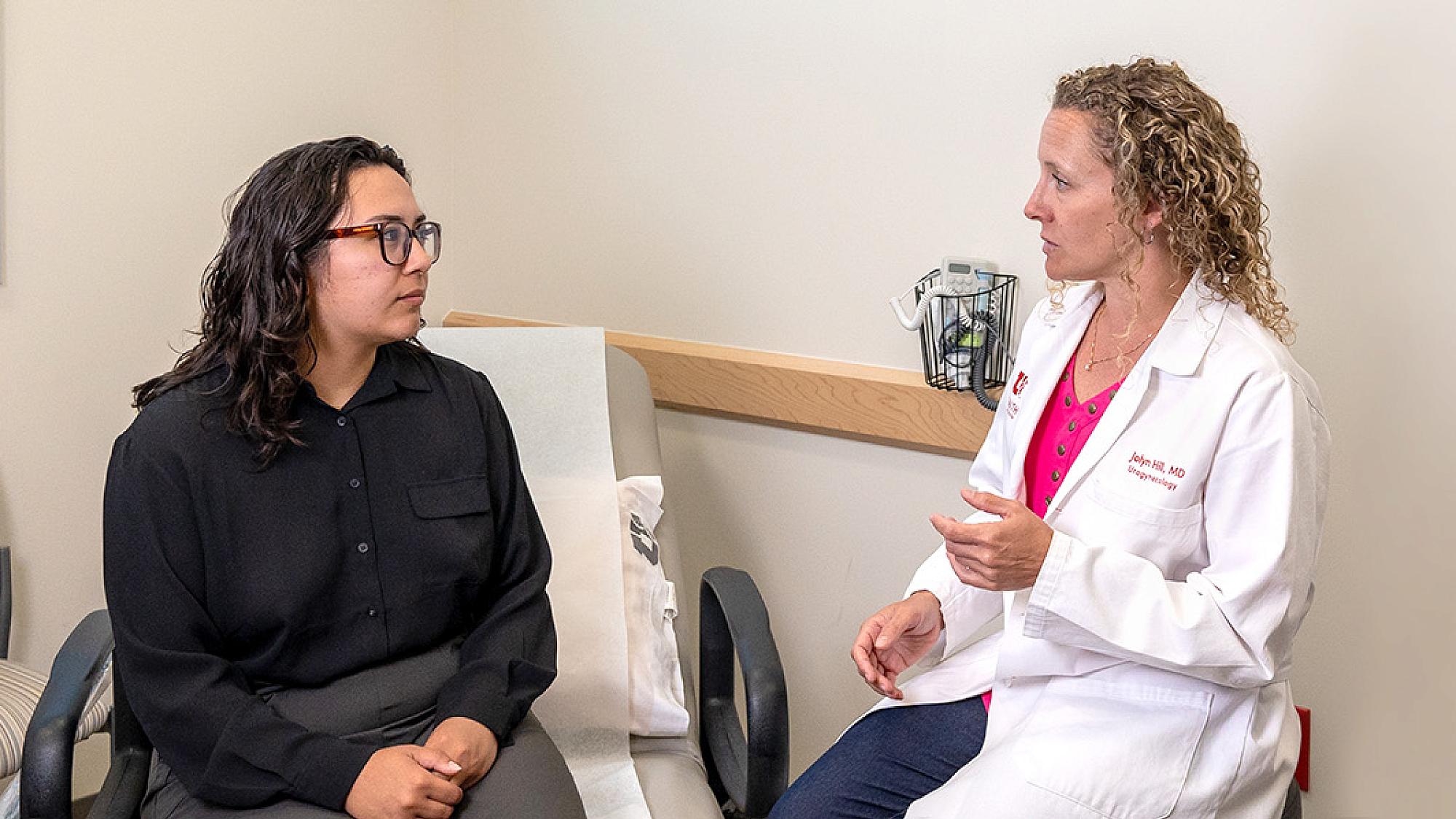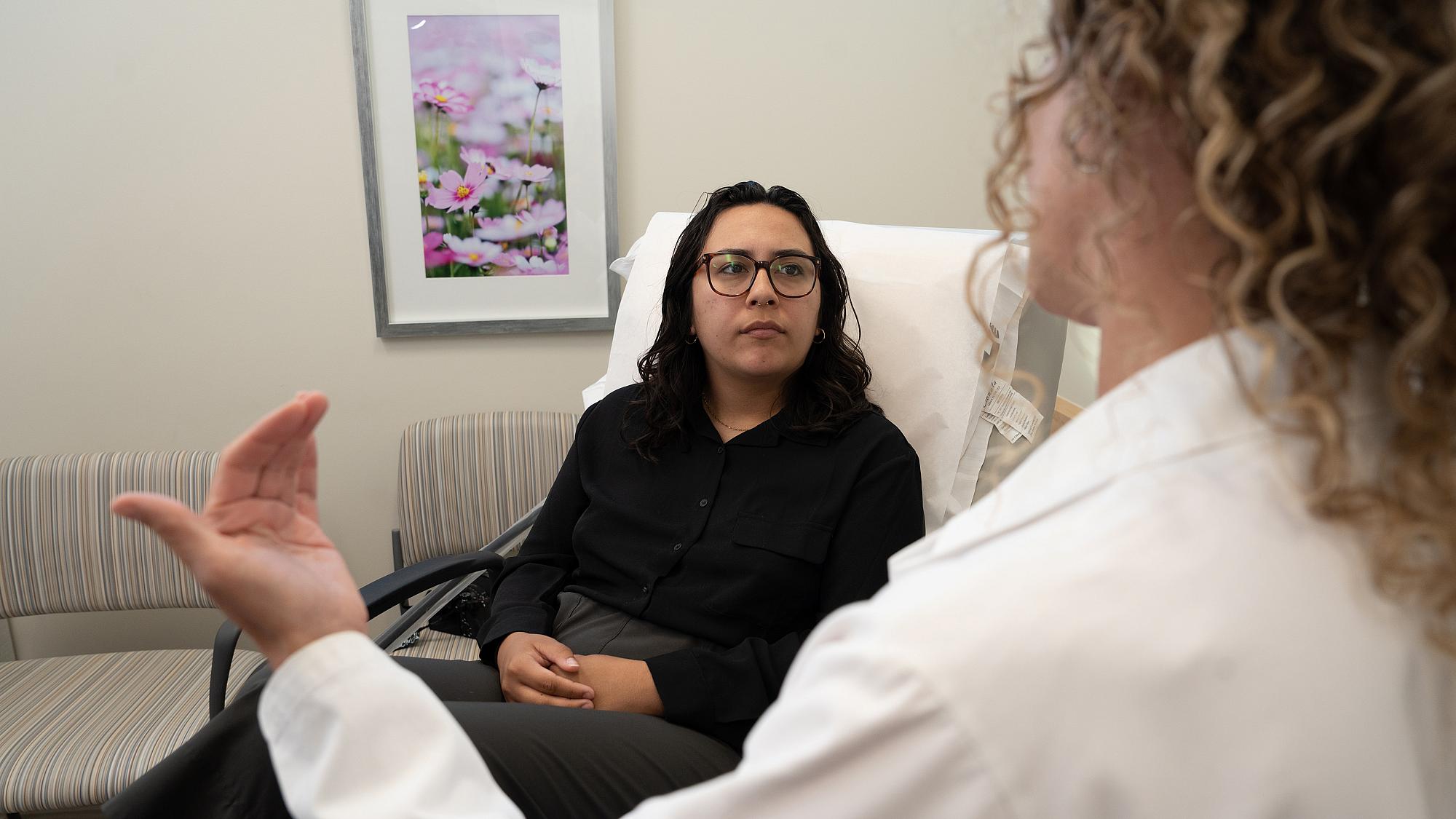What Is Prolapse?
If you’re over 45 and like millions of other women, you may be suffering from something that few women know about: pelvic prolapse.
Pelvic prolapse is when the organs inside your pelvis (your bladder, vagina, uterus, cervix, and rectum) drop or fall—sitting lower than where they should.
Even though prolapse is very common, most women don’t realize they have it. If you’ve given birth, had a hysterectomy, or are over 45, your chances of having prolapse go up (your chances of having particular health problems are also called risk factors).
You may be able to live with prolapse without it affecting your day-to-day life. But you should consider getting treatment if:
- you have a hard time urinating,
- the skin around your vagina has sores,
- you feel less confident with your body, or
- you have bulging in your vagina.
What Does Prolapse Feel Like?
Muscles in your pelvis hold up and support your:
- bladder,
- intestines,
- rectum,
- uterus, and
- vagina.
Together, these muscles make up your pelvic floor.
Over time, your pelvic muscles and connective tissue can tear, stretch, or get weak. When this happens, your organs can drop. This is called pelvic prolapse, pelvic organ prolapse, or just prolapse. (“Prolapse” means “to slip forward” or “slip down”).
Prolapse can also be considered a hernia that goes into your vagina.
If you think you may have prolapse, you’re not alone. In fact, 70 percent of women will get some form of prolapse, even if it’s very mild.
What Does Prolapse Feel Like?
Prolapse can feel different for each woman. Some women say it feels like they’re sitting on a ball all the time. Other women feel fullness or pressure around their vagina, bladder, or pelvic area.
The most obvious way to tell if you have prolapse is if you feel a bump or “bulge” at the bottom of your vagina. That bulge is tissue from your organs that has fallen downward through your vagina.
Types of Prolapse
There are different kinds of prolapse:
Cystocele or urethrocele—this is when your bladder falls down into your vagina. If the cystocele or urethrocele is severe, the organs that have fallen down may stick out or “bulge” out of the bottom of your vagina. Cystoceles and urethroceles are common in women who’ve had hysterectomies because the uterus is no longer sitting inside the pelvic area.
Women with this type of prolapse may have bladder problems as well. Problems can include urinating often, not being able to control when you pee (loss of bladder control), and getting frequent bladder infections.
Enterocele or rectocele—if you have an enterocele or rectocele, your intestines or rectum slide into your vagina. (A rectocele is when your rectum slides into your vagina; an enterocele is when your intestines slide into your vagina).
If you have either of these, it may be hard for you to make a bowel movement (poop). You may also feel like you can’t ever fully empty your bowels.
Uterine prolapse—this type of prolapse happens when your uterus falls down into your vagina. If you feel pressure around your pelvis, you may have uterine prolapse. Your cervix may also stick out of the opening of your vagina.
Find a Doctor
How Will I Know if I Have Prolapse? What Are Prolapse Symptoms?
Luckily, most women with pelvic prolapse have no symptoms. That’s because not all women with prolapse will feel or notice any bulge near their vagina.
But you may have prolapse if you’re dealing with these things:
- you feel a “bulge” at the bottom of your vagina; or
- you have heaviness, pressure, or bulging in your vagina that feels worse at night, or when you’re making a bowel movement (pooping).
Prolapse Treatments
Treatments for pelvic prolapse will depend on how severe your prolapse is:
However, you may not need any treatment if you have prolapse. This idea is called watchful waiting—when you and your doctor work together to monitor your prolapse symptoms. Many women don't even know they have prolapse, or prolapse doesn't interfere with quality of life. In these cases, watchful waiting is a good option.
Should I See a Doctor?
You may be surprised to learn that prolapse doesn’t always need treatment. In fact, many urogynecologists (doctors who specialize in caring for your pelvic floor) don’t prescribe treatment if prolapse isn’t affecting a woman’s quality of life.
When do you need treatment for prolapse? It can be a good idea to see a doctor if:
- your vagina or pelvis feels uncomfortable,
- you’re afraid to spend time with family or friends (or go out in public) because you’re afraid someone will see your bulge,
- you don’t do your favorite activities anymore, or
- your cervix or vagina has ulcers or bleeds from rubbing against your underwear.
You can make an appointment with a urogynecologist to find out if you have prolapse, and what treatments are best for you.
Hear From a Urogynecologist About Pelvic Organ Prolapse
This is a modal window.
Resources for Our Patients
When Should You See a Urogynecologist?
Do you have trouble with an overactive bladder, feel pressure in your pelvis, or feel like your vagina, bladder, uterus, or rectum has dropped, causing a bulge or pressure? You do not have to suffer through these symptoms. They are treatable.
5 for Life Screenings
A big part of staying healthy is detecting diseases early. We make it easy for you to get lifesaving tests for heart disease, breast cancer, cervical cancer, skin cancer, and colon cancer in one convenient visit.
Postpartum and Pelvic Floor Complications
As a mother-to-be or a new mom, there’s a lot you are juggling – life with a new baby, lack of sleep, breastfeeding, and adapting to other changes to your body. Our new clinic for postpartum (after childbirth) pelvic floor problems at University of Utah Health is specifically designed to address pelvic floor issues that may occur before or after childbirth.
Hear From Our Specialists
Overactive Bladder in Women: Symptoms, Treatments, and How to Take Back Control
If frequent bathroom trips disrupt your life, you are not alone. Women's health expert Kirtly Jones, MD, talks to urogynecologist Whitney Hendrickson, MD...









